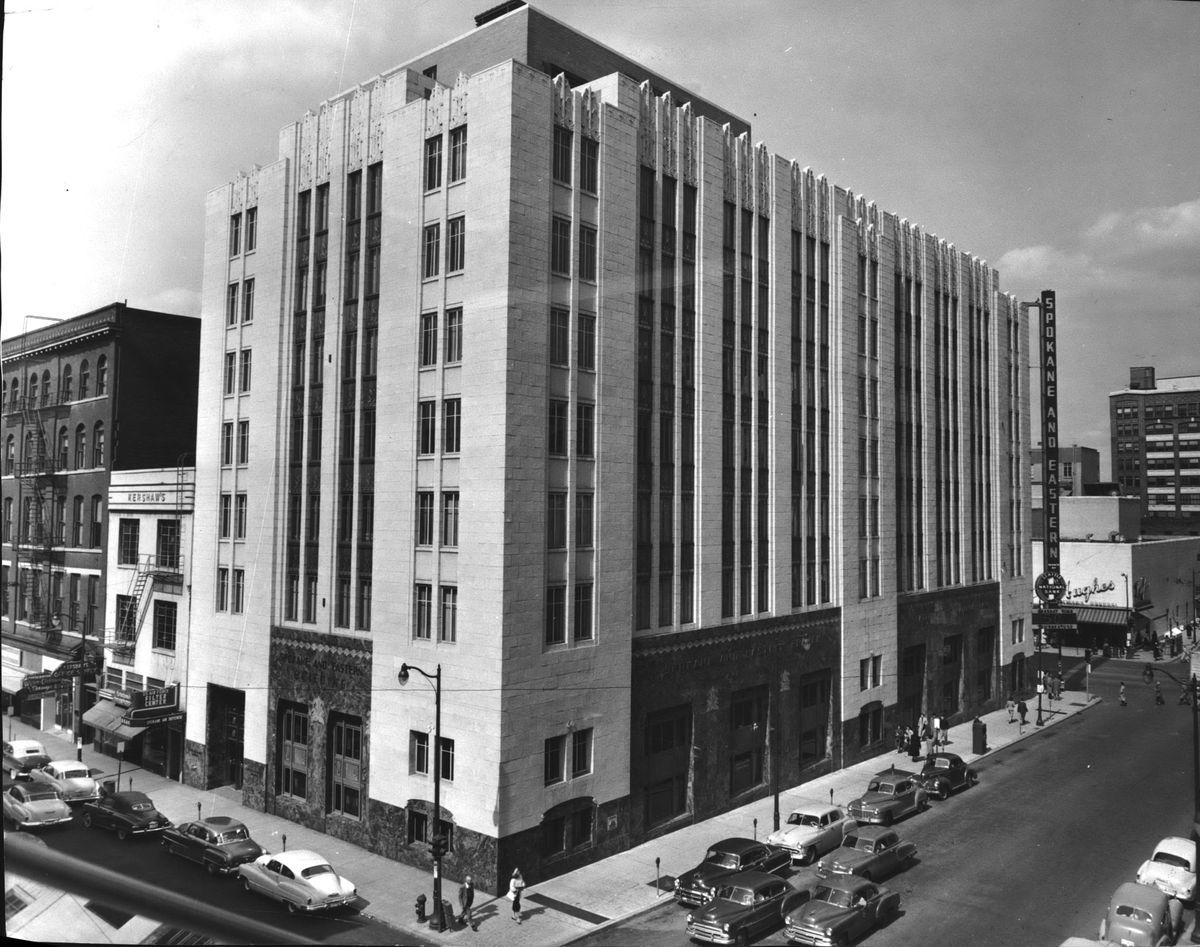Then and Now: The long banking history of Riverside and Howard

The southwest corner of Riverside Avenue and Howard Street has been the epicenter of the Spokane banking business for more than 120 years. Shortly after the disastrous 1889 fire, a stately new five-story brick building was erected there for the Traders National Bank. In 1914, Traders merged with the Spokane and Eastern Trust Company, which would itself later become a bank.
Joel E. Ferris, an influential figure in Spokane for more than 50 years, was born in Illinois in 1874 and arrived in Spokane in 1908.
He worked in banking, established his own investment firm, Hargrove and Ferris, and became Spokane and Eastern’s president in 1931, the same year that the old bank was razed for a new seven-story Art Deco building, which the Spokesman-Review called “one of the most distinctive buildings in the Northwest.” In 1935, in the depths of the Great Depression, the S&E merged with Seattle First National Bank, but retained its name in Spokane until the 1950s when the sign on the building changed to read “First Bank”.
Through Ferris’ long career, he served on the boards of many institutions, including Whitman College, Washington State University, St. Luke’s Hospital, and the Hutton Settlement. Ferris was the state chair of war bond drives during the First and Second World Wars. He became an authority on our region’s history and wrote many articles on the subject. His history collection resides with the Eastern Washington Historical Society. Ferris died in 1960 and his name was placed a new South Hill high school in 1961.
The bank, and all other structures on the block, were torn down to make way for the modern 20-story Seafirst Financial Center, built in 1980. The name changed to Bank of America Financial Center in 2000 following a 1998 merger.